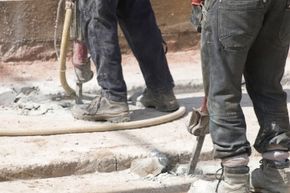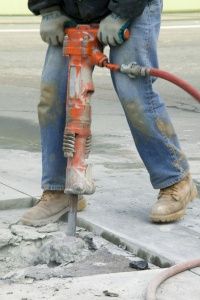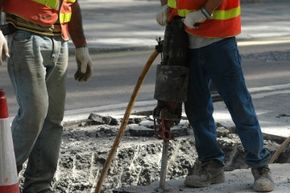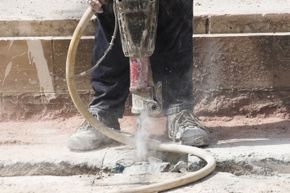Concrete, asphalt and rock are hard -- sometimes really hard -- to work with. Thanks to that toughness, roads and building foundations last for decades. But when rebuilding or mining projects require removing these unyielding substances, a sledgehammer just isn't enough. That's when jackhammers come in handy.
T-shaped jackhammers are among the most iconic, fearsome and ear-shattering tools on construction and demolition sites. Because they combine two fundamental human hand tools (a hammer and a chisel) in one mechanized body, they are also one of the most useful.
Advertisement
Without jackhammers, we humans would need new systems to rid our paths of old concrete or rock. We could always go back to the old way -- using heavy-headed sledgehammers -- but there probably aren't enough chiropractors in the world to keep construction workers' backs aligned.
Plus, sledgehammers are achingly slow. By comparison, jackhammers (sometimes called pneumatic drills or demolition hammers) make quick work of even really hard surfaces like highways, patios and rock walls.
That doesn't mean jackhammers are easy to use. They tend to be unwieldy, with some weighing nearly 100 pounds (45 kilograms), meaning that safe operation requires a user with some muscle. Otherwise, you risk dropping the tool, which could damage the innards of the jackhammer ... or the person using it.
In spite of the challenges of using jackhammers, these tools really are necessary for all sorts of major projects. And even though they perform a straightforward and brutal task, modern jackhammers are thoroughly evolved and refined machines with a long history. Keep reading and you'll see just how jackhammers came to be.
Advertisement



